Review FAQ
Review FAQ
DISCLOSURES
Any pertinent disclosures will be included at the top of each post. We currently mark posts at the top with the labels “Affiliate Link,” “Purchased,” “Sample,” and “Sponsored.” In the case of paid placement, the post title will begin with “Sponsored” for absolute clarity. Below, you will find more in-depth descriptions of the common disclosures we make on the blog:
- AFFILIATE LINK | The majority of links to third-party retail websites are affiliate links. We receive a commission if you purchase any product(s) through affiliate links. It does not add any cost to you as the customer. The commission comes out of the retailer’s pocket, and the commission can range from as little as 1% to as much as 15% depending on the retailer, campaign, product type, etc. For many of our affiliates, if a product is returned, the commission is returned as well.
- PURCHASED | The products featured on the blog is a healthy mix of products purchased by us for review as well as samples provided by brands. In order to make it clear that disclosures were not omitted or forgotten, we began including Purchased to indicate products we bought ourselves.
- SAMPLE | Brands, their representatives (such as their public relations firms, marketing affiliates, and the like), and retailers will send a product for consideration. Consideration means that the product is submitted to us so we can check it out and determine whether it is a product we want to include on the blog. We make all decisions regarding when, how, and if it is even mentioned on the blog. We do not allow brands to read a review in advance. We do not accept compensation for our product reviews.
- SPONSORED | Sponsored posts are specific posts that we have been compensated for. “Sponsored” will occur in the title of the blog post. Sponsored giveaways, where the compensation may be in the form of prizes and/or financial compensation for exposure, handling of fulfillment, etc. We do not endorse or otherwise review products for compensation, so you will see topical content (e.g. “5 Tips for a Girl’s Night Out”), giveaways, promotions (like an upcoming sale), or advertorials (advertiser/brand-written content). You may find round-ups or gift guides of a variety of products that are sponsored, but these will only contain products we’ve reviewed previously (that were unrelated/unattached to the paid post) and brands cannot have any stipulations on specific products/brands for inclusion (e.g. they can direct the theme, like products under $15, but they can’t say “it must include this brand”). We also develop larger experiences like brand-driven Foundation Matrix matching, which involves creating and developing code and design for the brand, or swatching all shades in a foundation formula. There can be NO requirement that we must review products that are related to sponsored posts (unless a review existed prior to the brand reaching out).
POLICIES
- Personal Experience: All reviews are written based on the Author’s personal experience with the product and is not influenced by third parties (advertisers, brand representatives, public relation representatives, etc.). Products are tested in the way(s) and for as long as necessary to properly test a product–e.g. a lipstick requires less time to test than a moisturizer.
- Based on Claims: Each product is tested and reviewed based on the claims the product makes. As much as possible, we defer to marketing/advertising text as written by the brand. Whenever we feel we have to make interpretations, we try to walk readers through that interpretation. We typically err on the side of the customer rather than give the brand the benefit of the doubt.
- Fairness: We review products in full and do not hide or ignore areas that could be improved. When you see a review that doesn’t mention any cons, that means we couldn’t find any. Similarly, if you see a review that’s all negative, it’s not because we want to bash a product–it’s because the positives weren’t there!
- No Brand Oversight: We do not make changes to the character of our reviews. We have not personally had a brand ever reach out in an attempt to change what we have written, but should it ever occur, we would not make those changes. The only changes we will make to a review or post is for things like pricing inaccuracy or adjustments, retailer availability, release date updates–fact-based changes that have no impact on our opinion but facilitate the spread of pertinent information.
PHOTOS/SWATCHES
PHOTOGRAPHY
We do our best to take clear, well-lit photos that depict color and texture accurately. Unfortunately, brightness, contrast, and color can vary wildly from device to device, screeen to screen. Even just angling a laptop screen forward or backward can greatly change the contrast and intensity of color! Here are the steps we have taken to try to minimize variance to the best of our abilities:
- Studio lights: these offer consistent lighting whether it is cloudy or sunny
- Consistent settings: we use the same settings when shooting to avoid variance, and these settings are calibrated every other month or so to ensure they are appropriate (they do not change much, unless equipment changes, e.g. a camera upgrade)
- Color average across multiple devices: we use default screen/color settings and try to get a good “average” across these devices – iPhone 7+, iPhone 7, MacBook Pro, LG PC Monitor, iPad. The goal is to try to find a good color profile that looks fairly accurate on multiple devices vs. accurate on one device but wildly inaccurate on other devices. We will favor iPhone/Apple monitors over PC (though all editing and work are done through PC) due to the percentage of our users who use iPhone/Apple devices to view the site.
- Color balanced editing room: all lights are color balanced and take ambient light into account so help maintain consistent editing settings, including the time of day that phones are edited and reference photos are made
EDITING
All photos, whether for products or swatches, are edited for accuracy but not to make products look better (or worse) than they are. We may adjust color, brightness, contrast, etc. as needed to depict the most accurate color by looking at the product in person while editing. Backgrounds may be brightened or touched-up (e.g. a speck of dust, piece of lint, and so forth will be removed). When it comes to skin retouching, something like removing a pimple from a series of lip swatches may be done (we all have pimples but photos live forever), but if the photos in question were with respect to a concealer, foundation, pore smoothing primer, etc. all “flaws” would be left as is so that the photos would accurately depict things like coverage, ability to hide texture, and so forth. Similarly, lip swatches are not edited to make a lipstick look like it applied better by sharpening the edges or blurring imperfections on the lips–if the lipstick catches on flakes, we want you to see that.
SWATCHES
Currently, swatches are applied by taking flat, firm synthetic brushes and pressing, gently pulling the product about 1 centimeter at a time, and then repeating for the length of the swatch (about 3-4 centimeters). After the color is applied for a swatch, we take a clean fingertip and use that to blend and soften the edges of a swatch using a technique/pressure that is similar to using a fluffy brush (so really skimming gently across the surface). Primer is not used in swatches unless specifically notated in the swatch’s caption.
The methodology we settled on for swatches was decided after trying over thirty different types of products applied in practice (e.g. eyeshadow onto the eyelid) against the swatch. The goal was to make these similar so that swatches would be accurate in terms of color payoff (as finger swatches can sometimes apply products more heavily).
Note, if a brand specifically says to apply their product a certain way, e.g. “with fingertip for maximum coverage” or “wet for full coverage” then that is the method used (I try to follow instructions first, then deviate as necessary to see how things work using other techniques).
There are some products that may show more than one swatch for the product, and here are those instances explained:
- Lip Swatches: Lip products typically have two photos depicting the lips. One is in direct light, which we use to simulate sunlight; think of it was the best and clearest light, where flaws are hard to hide. The other is indirect and diffused light, which we use to simulate shade; think of this as more forgiving light, an office or a room where some light filters in but it is not bright. Direct light offers better insight into texture, finish, and undertones, whereas indirect light is more accurate for inferring true vibrancy (direct light makes all products appear a little brighter and richer) and is worst at showing finish (sparkles, shimmer, and glossiness get lost).
- Dry/Wet Formulas: Products that can be used dry or wet are often shown both ways, usually with the first swatch being dry and the second swatch (immediately next to it, within the same photo) is the product applied damp (unless otherwise specified).
- Sparkle/Glitter Formulas: Products are applied as-is as well as wet, usually with the first swatch being dry and the second swatch (immediately next to it, within the same photo) is the product applied damp (unless otherwise specified).
- Cream Formulas: Most cream formulas are shown as a regular swatch, and then deliberately blended and sheered out — e.g. cream eyeshadows are shown “as-is” as well as a sheer wash of color, cream blushes are shown “as-is” and then sheered out as a wash of color (using an “average” amount of product – not using the teeniest, tiniest bit but not loading up the area either!) as many people wear their cheek colors at sheerer coverage levels than opaque.
- Cheek Products: The majority of cheek products showcase two swatches within the same photo. The first swatch is “as-is,” swatched like any other product, which will give insight into the true color, intensity, undertone, and its coverage level. The second swatch is blended and diffused to mimic application as it would appear on the cheeks, and this gives insight into the blendability of the powder as well as the real finish (products can often have better or worse finishes as they are worked onto the skin).
- Liners & Pencils: Eyeliners/eye pencils and lip liners/lip pencils are often narrower at the tip than a lipstick, so the first swatch is a single pass of the liner or pencil, and then second swatch is a larger swatch to give better insight into the actual color, undertone, texture, and finish of the product as even in a macro photo, the single pass is too narrow to accurately depict color. Though we do not try to build-up or layer the product heavily in the larger swatch, there is overlap as we go back and forth to create the larger swatch and make it look continuous, so the second swatch should not be used to accurately assess pigmentation.
- Loose Pigments or Glitters: Loose pigment is often shown as a dry/wet combination, as they typically are such a formula. Loose glitter is often shown as loose/dry and then over a glitter adhesive.

